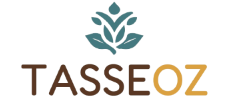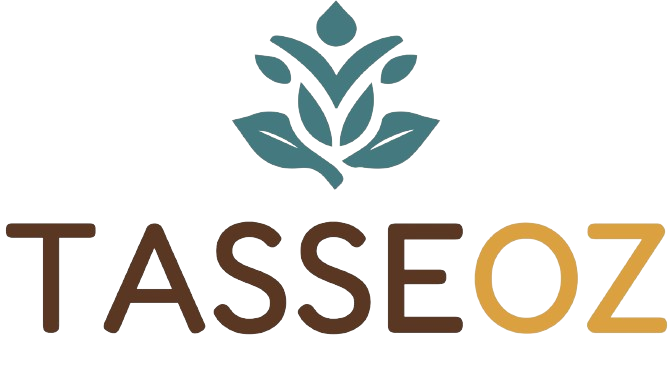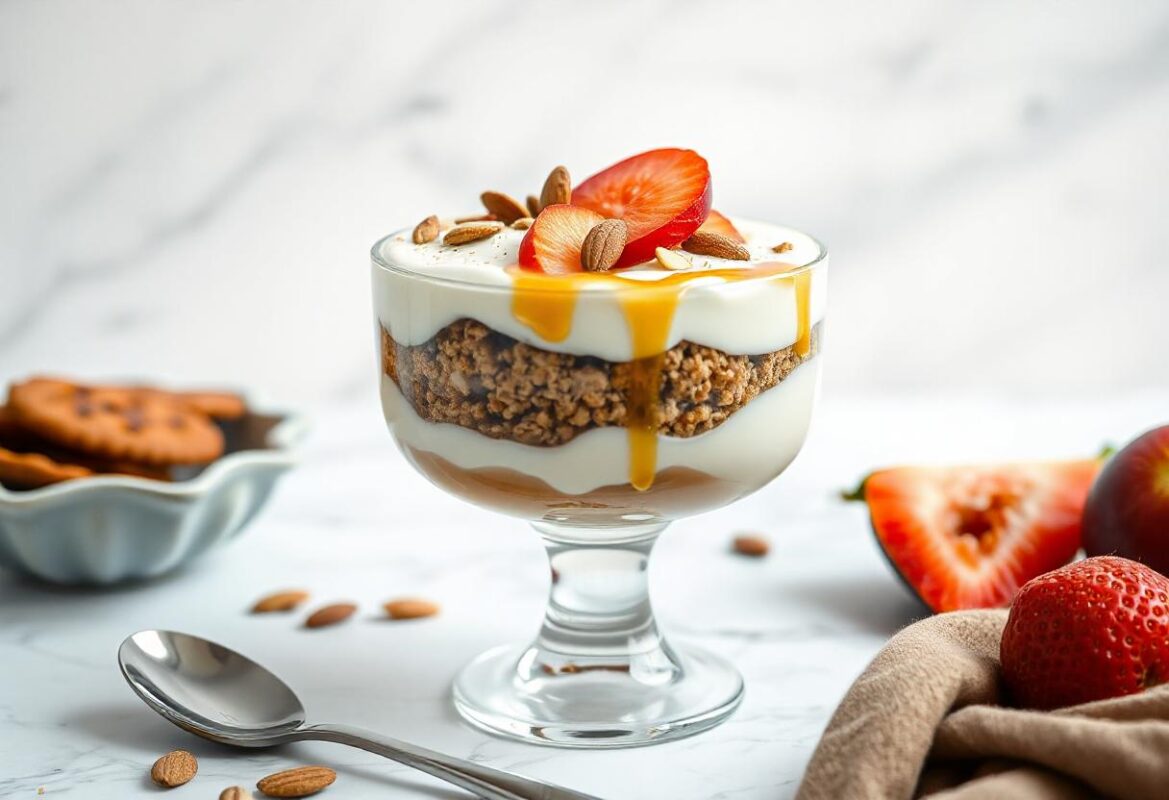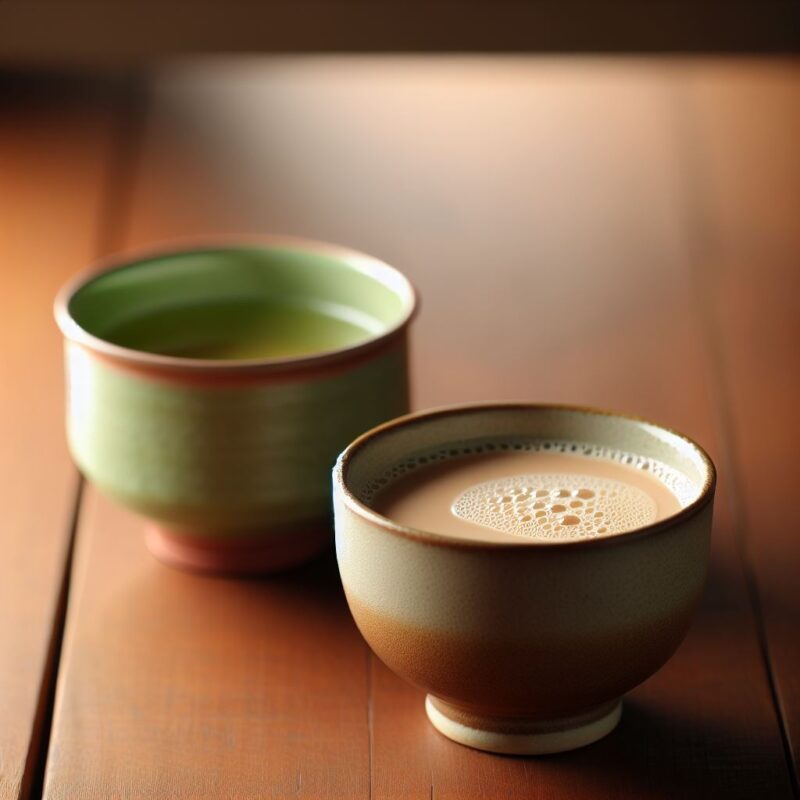Cinnamon, a beloved spice with a rich history, comes in two main types: Ceylon cinnamon and Cassia cinnamon. While both types share a common name, their differences in taste, health benefits, and uses are significant. In this article, we’ll explore these differences and highlight why Tasseoz Chai Tea chooses the finest handmade Ceylon cinnamon for its premium blends.
Origin and Appearance
Ceylon Cinnamon
- Scientific Name: Cinnamomum verum
- Origin: Native to Sri Lanka (formerly Ceylon)
- Appearance: Thin, light brown sticks with multiple layers, easily broken into fine powder
- Flavor: Delicate, mildly sweet with subtle notes of citrus and clove

Cassia Cinnamon
- Scientific Name: Cinnamomum cassia
- Origin: Predominantly grown in China, Indonesia, and Vietnam
- Appearance: Thicker, darker brown sticks, harder to break, and usually rolled in a single layer
- Flavor: Stronger, more pungent, and slightly bitter

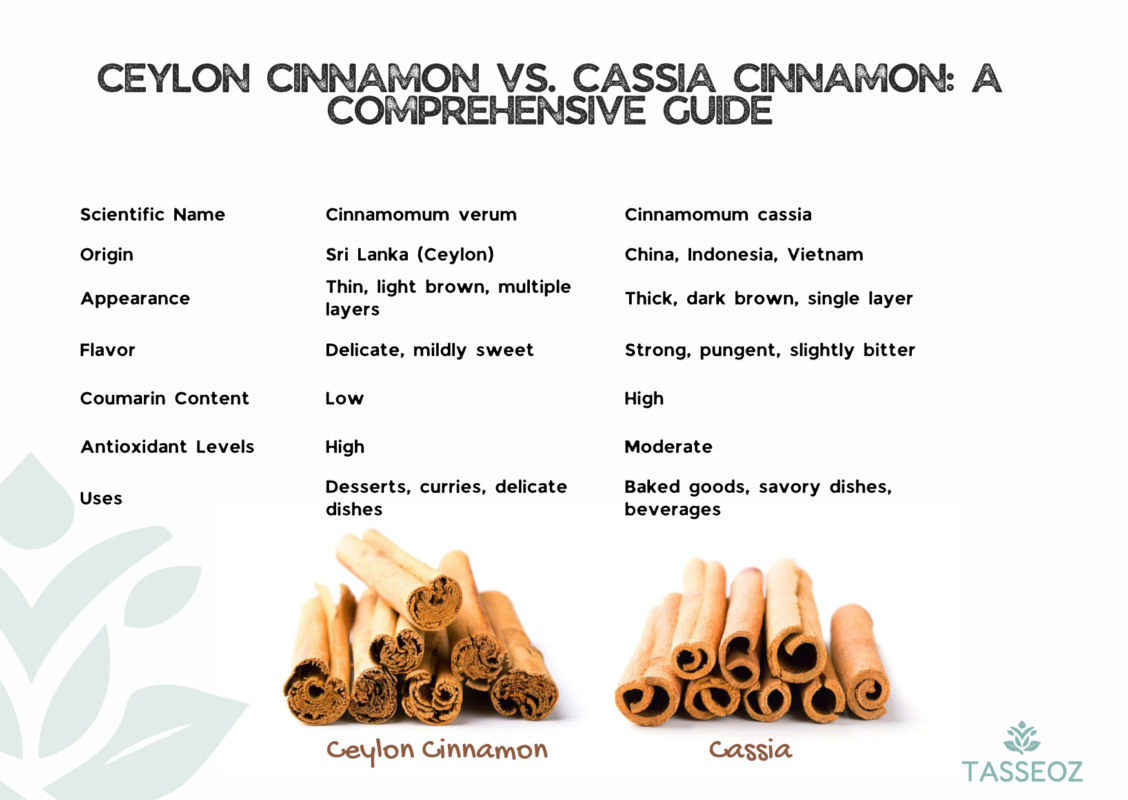
Health Benefits
Ceylon Cinnamon:
- Lower Coumarin Content: Contains negligible amounts of coumarin, a natural compound that can be toxic in large doses (Anderson et al., 2008).
- Rich in Antioxidants: high levels of antioxidants, which help combat oxidative stress and reduce inflammation (Jayaprakasha et al., 2003).
- Blood Sugar Regulation: Helps in managing blood sugar levels, making it a beneficial spice for people with diabetes (Khan et al., 2003).
Cassia Cinnamon:
- Higher Coumarin Content: Contains higher levels of coumarin, which can cause liver damage when consumed in large amounts over extended periods (Wölfle et al., 2006).
- Similar Blood Sugar Benefits: Also helps in lowering blood sugar levels, but its high coumarin content can limit safe consumption (Mang et al., 2006).
Culinary Uses
Ceylon Cinnamon:
- Ideal for delicate desserts and dishes requiring a subtle spice flavor.
- Preferred in traditional Sri Lankan and Indian cuisines, adding a nuanced depth to curries and rice dishes.
Cassia Cinnamon:
- Commonly used in baked goods, savory dishes, and beverages where a robust cinnamon flavor is desired.
- More affordable and widely available, often used in commercial cinnamon products.
Why Tasseoz Uses Ceylon Cinnamon
At Tasseoz, we believe in crafting a chai tea that not only delights the senses but also promotes wellness. Our choice to use high-quality, handmade Ceylon cinnamon is rooted in the following reasons:
- Superior Flavor Profile: The subtle, complex flavor of Ceylon cinnamon complements the rich heritage of Ceylon spices in our chai blends, creating a balanced and refined taste.
- Healthier Option: With its low coumarin content and high antioxidant levels, Ceylon cinnamon aligns with our commitment to providing a health-conscious product.
- Sustainable and Ethical Sourcing: We partner with local farmers who use sustainable practices, ensuring that every sip of Tasseoz Chai Tea supports both your health and the environment.
Conclusion
Choosing the right cinnamon can make a significant difference in your culinary and health experiences. Ceylon cinnamon, with its mild flavor and health benefits, stands out as the superior choice over Cassia cinnamon. At Tasseoz, we are proud to incorporate this “true cinnamon” into our chai blends, offering a premium tea experience that is as good for your health as it is for your taste buds.
For more information on our sourcing practices and to experience the unique taste of our handmade blends, visit Tasseoz.
References:
- Anderson, R. A., et al. (2008). Cinnamon, insulin potentiation, and metabolic syndrome. Journal of Medicinal Food, 11(4), 637-640.
- Jayaprakasha, G. K., et al. (2003). Chemical constituents of Cinnamomum zeylanicum and their antioxidant activities. Journal of Agricultural and Food Chemistry, 51(17), 4768-4772.
- Khan, A., et al. (2003). Cinnamon improves glucose and lipids of people with type 2 diabetes. Diabetes Care, 26(12), 3215-3218.
- Wölfle, D., et al. (2006). The anti-inflammatory effect of coumarins. Fitoterapia, 77(5), 303-311.
- Mang, B., et al. (2006). Effects of a cinnamon extract on plasma glucose, HbA1c, and serum lipids in diabetes mellitus type 2. European Journal of Clinical Investigation, 36(5), 340-344.
